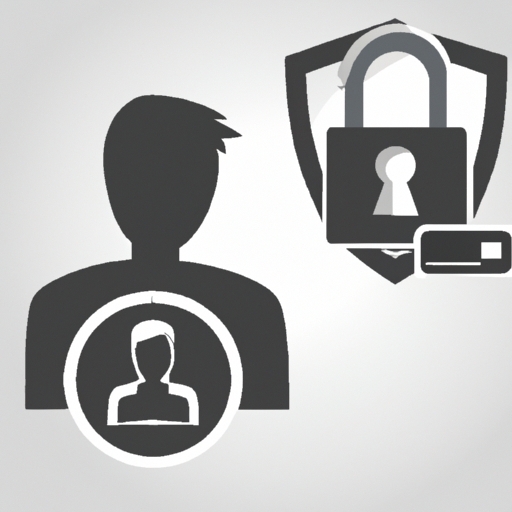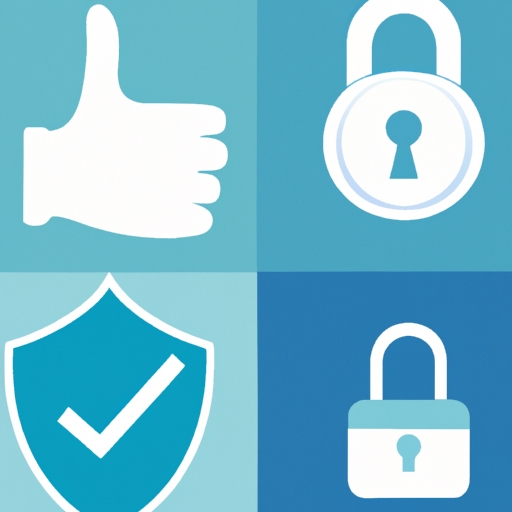
Understanding the Holistic Security Mindset: Your First Step on the Roadmap
Okay, so youre diving into holistic security design? Holistic Security Design: Beyond the Firewall . Awesome! But before you get bogged down in fancy frameworks and complicated tech (which, trust me, theres plenty of), you gotta grasp the mindset. Its like, the foundation everything else is built on. Think of it as seeing the forest and the trees, you know? Not just focusing on locking the front door while leaving the back window wide open.
A holistic security mindset isnt just about preventing cyberattacks or physical breaches (though those are important!). Its about understanding that security is intertwined with everything. Its people, processes, technology, and even the environment around you. Its about recognizing that one small vulnerability, seemingly insignificant, can have a ripple effect that compromises the entire system. (Imagine a tiny crack in a dam... yeah, not good.)
For instance, consider a company hyper-focused on firewall security. Great, right? But what if their employees are using weak passwords, falling for phishing scams, or sharing sensitive data on unsecured networks? All that fancy firewall protection is practically worthless then, isnt it? See? Holistic means looking at the whole picture, the entire ecosystem.
This mindset also means acknowledging that security isnt a one-time fix. managed service new york Its, like, a continuous process of assessment, adaptation, and improvement. The threat landscape is constantly evolving; what worked yesterday might not work tomorrow. (Think of it as a game of cat and mouse, but the mouse keeps learning new tricks.)
So, how do you actually develop this mindset? Well, start by questioning everything. Dont just accept things at face value. Dig deeper, ask "what if?" Scenarios. Consider the potential consequences of every action. Talk to people from different departments, gaining different perspectives.

Okay, so, like, when youre trying to figure out holistic security – which, by the way, sounds way more complicated than it actually is – a big part of it is figuring out what you gotta protect, and what could, you know, hurt you. Think of it as taking stock of your stuff, but also, like, your weak stuff.
Its called "Identifying Your Assets and Vulnerabilities." (Fancy, right?)
Assets, basically, are things you care about. Could be your computer, duh. Or your phone. Maybe its your super-secret diary hidden under your mattress (dont judge!). Or, even more importantly, its your data. Your emails, your photos, your bank account details, that embarrassing video you made singing karaoke last weekend. (Okay, maybe that video isnt a critical asset, but you get the idea!). You gotta figure out whats important and what would suck if someone else got their hands on it.
Now, vulnerabilities... thats where it gets a little trickier, but not that tricky. Vulnerabilities are like, the holes in your defenses. Think of them as the unlocked windows and doors in your house. Maybe your passwords "password123" (seriously, dont do that!). Maybe you click on every link you see in your email (huge no-no!). Maybe you havent updated your phones software in, like, forever. These are all vulnerabilities. Theyre weaknesses that someone could exploit to get to your assets.
So, you gotta list everything. Like, really list everything. And then, for each asset, you gotta think about how someone could get to it. What are the possible ways it could be compromised? What are the, like, chances of that happening? (This is where it gets a little less beginner-friendly, but dont stress too much about being perfect).
Once youve done that, youre in a much better place to, you know, actually do something about securing your stuff. You can start plugging those holes, locking those windows, and generally making it harder for the bad guys to get in. Its not a one-time thing, either. You gotta keep doing it, because things change, new threats pop up, and you get new stuff. But hey, at least youre on the right track! Its all about thinking ahead and being a little paranoid (but, like, in a good way!).

Okay, so, you wanna talk about layered security controls? For holistic security design? Like, the big picture stuff? For beginners? Alright, lets dive in, but keep in mind Im not perfect, so expect a few hiccups.
Think of it like an onion (or a really complicated cake). You dont just have one layer of frosting, right? You got the cake, the filling, maybe some jam, then frosting, then sprinkles. Security should be the same. Implementing layered security controls is essentially building multiple defenses. If one fails-- and trust me, someday one will fail--you have others to catch the bad guys.
For example, you might have a firewall protecting your networks edge (thats layer one) and then inside the network, you have intrusion detection systems looking for suspicious activity. (Layer two!). Then maybe individual computers have antivirus software and strong passwords (layer three, maybe even four if you count the password complexity!).
Its about redundancy, see? Its not about putting all your eggs in one basket, cause, well, baskets break. And hackers? They love broken baskets.
The beauty of this approach is that each layer can be tailored to a specific threat. Think of it like this, a strong front door lock keeps out casual burglars, but a security system with alarms and cameras is needed for a more determined thief. In cybersecurity, the same idea applies. A simple password might stop a script kiddie but a two-factor authentication system is required to protect against more sophisticated attacks.
But heres a thing beginners often miss (and Ive totally done it myself): the layers need to work together. They cant be fighting each other, or creating more problems than they solve. Overlap is good, but make sure they are designed to work as a single, cohesive security system, not just a bunch of random tools thrown together.
And please, for the love of all that is holy, dont forget the human element. No amount of technology can protect you if your employees are clicking on phishing links or sharing passwords on sticky notes. Security awareness training is absolutely critical. Its probably the cheapest, and sometimes the most effective, layer you can add.
So yeah, layered security controls – its not just a buzzword. Its a fundamental principle of holistic security design. Build those layers, test them, and keep them updated. And remember, a little bit of paranoia is a good thing when it comes to cybersecurity! (Just not too much, ok?)
Okay, so, like, when were talkin bout Holistic Security Design (which sounds super fancy, right?), Security Awareness and Training is like, a REALLY big deal. Its not just about installin firewalls an stuff (though thats important too, obviously). Its about makin sure that people – you know, the ones actually usin the systems – aint the weakest link.
Think of it this way.
Basically, its about teachin everyone – from the CEO down to the, uh, intern makin the coffee – about the dangers out there.
And the training, well, that gotta be good! No one learns anything from boring, long lectures, seriously. (I mean, who even pays attention to those?). It gotta be engaging, practical, and maybe even a little fun, if possible.
Really, Security Awareness and Training is an investment in the entire security posture of an organization. Its about empowering people to be security champions, to think before they click, and to be an active part of the security solution, not just a potential problem. Its a super importent piece of holistic security, I think. Without it, all yer fancy tech might not mean squat.

Okay, so you wanna talk about Continuous Monitoring and Improvement in Holistic Security Design, huh? (Thats a mouthful!) Well, lemme tell ya, its super important. Think of your security design, not as something you just do once and then forget about, nah-uh. Its more like a garden, you gotta keep weeding, watering, and, you know, making sure no nasty bugs are eating all your plants.
Continuous Monitoring is basically keeping an eye on everything ALL the time. Like, are your firewalls working? Is anyone trying to sneak into your systems where they shouldnt? Are people actually following the security policies you put in place? You need tools and processes that track this stuff, and people who know how to read the reports and spot any red flags. If you just kinda assume everythings okay, youre gonna have a bad time.
And then theres the Improvement part. Say you find out, through your monitoring, that people keep clicking on phishing emails (oops!). Well, continuous improvement means you do something about it. Maybe you need better training, or stronger email filters, or both! Its about learning from your mistakes and making things stronger.
The goal, really, is to create a feedback loop. You monitor, you find problems, you fix them, and then you keep monitoring to see if your fixes actually worked! Its a never-ending process, but its worth it. (Trust me, dealing with a security breach is WAY more work.)
Dont get me wrong, it can be overwhelming, especially when youre first starting out. But if you break it down into smaller steps and focus on the most important things first, youll get there. And remember, security isnt about being perfect, its about being better than the bad guys. So, keep monitoring, keep improving, and keep your garden safe.
Incident Response Planning, okay, so like, imagine youve built this super secure house, right? (Holistic security design, yeah!). Youve got alarms, cameras, the works. But what happens when, uh oh, someone still tries to break in? Thats where incident response planning comes in. Its basically your "what to do when the bad stuff happens" guide.
It aint just about having a plan, its about having a good one. You need to think about all sorts of scenarios. What if its a phishing email? What if someone actually manages to get onto your network? Who do you call? What systems do you shut down? Where are the backups stored? All that jazz.
A good plan details each step, in easy to understand language. (No fancy jargon, please!). It assigns roles – whos in charge of what? Communication is key, too. How will you let everyone know whats going on? And, importantly, once youve dealt with the, um, situation, you need to review everything. What went well? What could have been better? How can you prevent it from happening again?
Think of it like this: incident response planning isnt just a security feature; its insurance. Its the thing that helps you, ya know, minimize the damage and get back on your feet as quickly as possible when things go sideways. Without it, youre basically just hoping for the best, which is, well, not a great strategy in the world of security, is it? Its like, incredibly important, honestly. Dont skip this step! Its part of the whole holistic thing, (duh).

Do not use any form of markdown.
Okay, so, Holistic Security Design, right? For beginners? It sounds like some super complicated spy movie thing, but honestly, its about keeping everything safe - not just computers, but people, information, and even the vibe of a place. check And technology? Well, its kinda got a huge role to play.
Think about it. Back in the day, security was all guards and gates. Now? Its cameras, sensors, encryption, and so much more. Technology lets us see threats before they even happen (sometimes!), track things, and lock down sensitive data. (Like, imagine trying to protect a companys secrets without using any passwords! Crazy, right?)
But heres the thing; its not just about buying the coolest gadgets. Holistic means looking at the big picture. You can have the fanciest firewall in the world, but if someone just gives their password away, that firewall aint gonna do much good. So, the role of technology is to support the whole plan. It helps us enforce policies, monitor whats going on, and makes it easier for people to follow the rules.
And its not only about gadgets, its about data. Data analytics can help us spot patterns.
More importantly though, technology can help us train (and educate) people so they are more security minded. Think about phishing simulations, or even something as simple as a security tips newsletter, it can really make a difference.
So, yeah, technology is a BIG part of holistic security. But, its not the ONLY part. It needs to be used wisely, with a plan, and with people who know what theyre doing. (And people who dont accidently click on suspicious links! Seriously, be careful out there.) Its about finding the right balance and using technology to make everything safer, not just more complicated.
